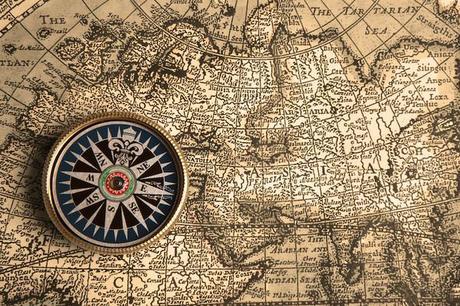
No prepper worth his or her salt would be caught dead without the basic survival tools of a compass and map, but these tools are useless if you don't know how to use them properly.
To many novice preppers, a map and compass are afterthoughts when assembling their 72-hour emergency bags, called bug-out bags (BOB) or Get Out Of Dodge Bags (GOOD).
A bug-out bag is a portable kit that contains enough items to help you survive for 72 hours when escaping a disaster. A BOB is unlike a survival kit because a BOB is geared for evacuation, not long-term survival.
Alongside your basic food items, your bug-out bag should contain water, clothing, and an array of emergency tools ranging from flashlights and fire-starters to first-aid supplies and survival knives.
1. Never Forget Your Compass
One of the most important prepper tools in your arsenal is your compass, and one of the most important skills you can develop is map and compass navigation.
It is mind-boggling to think how accustomed we have all become to one-touch GPS navigation devices and turn-by-turn talking map screens.
Basic compass use and map reading have become lost arts in this technologically dependent society. Preppers know that in any technology-driven ecosystem, the technology is the first thing to break down in a major catastrophe.
You can bring as many backup batteries as you want, but your smartphone will only serve as a really expensive electronic calculator if the infrastructure fails.
A compass is a navigational instrument that indicates direction, and compasses have been helping humans find their way since 206 BC.
A pocket compass contains a magnet that aligns itself to our planet's magnetic poles. North is set at 0 degrees - and east, south, and west are set at 90, 180, and 270 degrees respectively.
2. Finding the Real North
In the right hands, even an inexpensive pocket compass is an accurate scientific instrument, so here's how it works.
The main working part of a compass is a magnetic “needle” that floats on a pivot. The red end will always point to the Earth's magnetic north pole. As you may remember from science class, however, magnetic north is not the same as map grid north because magnetic north (where the compass needle points) fluctuates in different parts of the world and slowly changes over the years.
The outer ring is marked with the four main (cardinal) points of the compass, and these markings are used to establish your bearings, or the direction from where you are to where you want to be.
When you rotate the outer ring of the compass and align the red end of the needle with the red arrow on the baseplate, you can read the bearing on the ring. In order to take into account the difference between magnetic north and map grid north (true north), you'll have to adjust the bearing according to the degree of variation usually found in the legend of survey maps.
Preppers have their own rule of thumb for getting accurate bearings - they simply turn the compass housing counterclockwise about two degrees.
3. Using Your Compass with a Map
Did you know that maps are almost always printed with north at the top of the map? If you lay your map down on the ground with your compass on top of it, rotate the map so that the top of the map lines up with the north-seeking arrow on your compass.
All of a sudden, map reading is a cinch. If you want to reach a road that is parallel to you on the map, just use your compass to help you turn 90 degrees and keep walking. Eventually, you will intersect with that parallel road in the shortest possible distance.
4. Steer Clear of Metal Objects
You won't be able to get accurate compass readings inside a building or a vehicle, and the same holds true for anywhere your compass is in close proximity to a metal object.
Metal interferes with magnetic attraction, so use your compass in the open, as far away from metal surfaces as you can. If you think EMF is messing with your brain, imagine what it does to your compass!
5. Use Your Bezel Ring
Military style compasses have a bezel ring around the rim, not unlike expensive watches. The bezel ring has a tick mark, and this should be aligned with the arrow on the compass before you start your journey.
A bezel saves you time because you don't have to keep checking your compass every few yards. When visibility is low, the compass bezel allows you to navigate "by instruments" without missing a step.
There is a lot more to learn about compass navigation and mapping, but we hope we've whet your appetite for more and steered you in the right direction.





